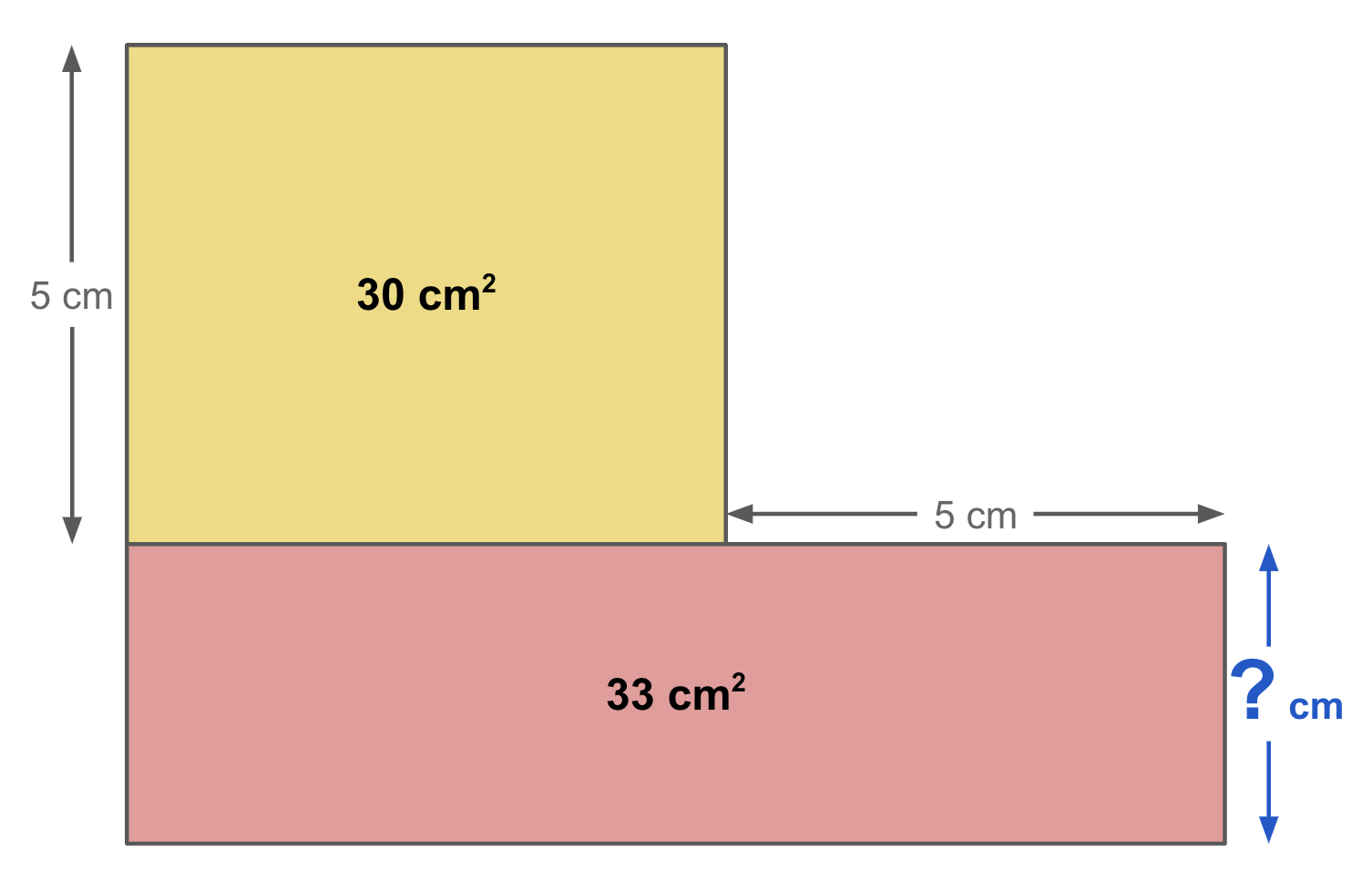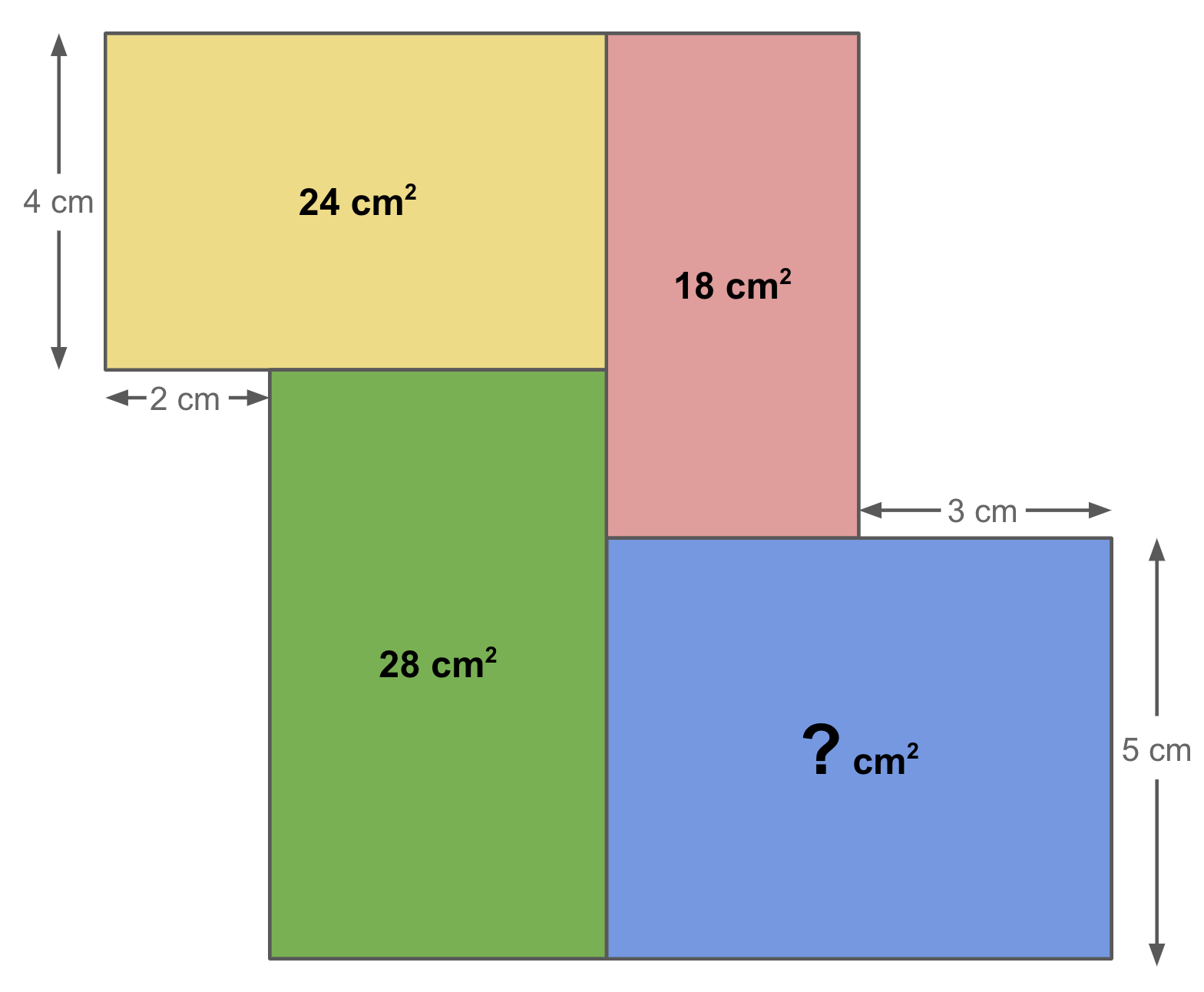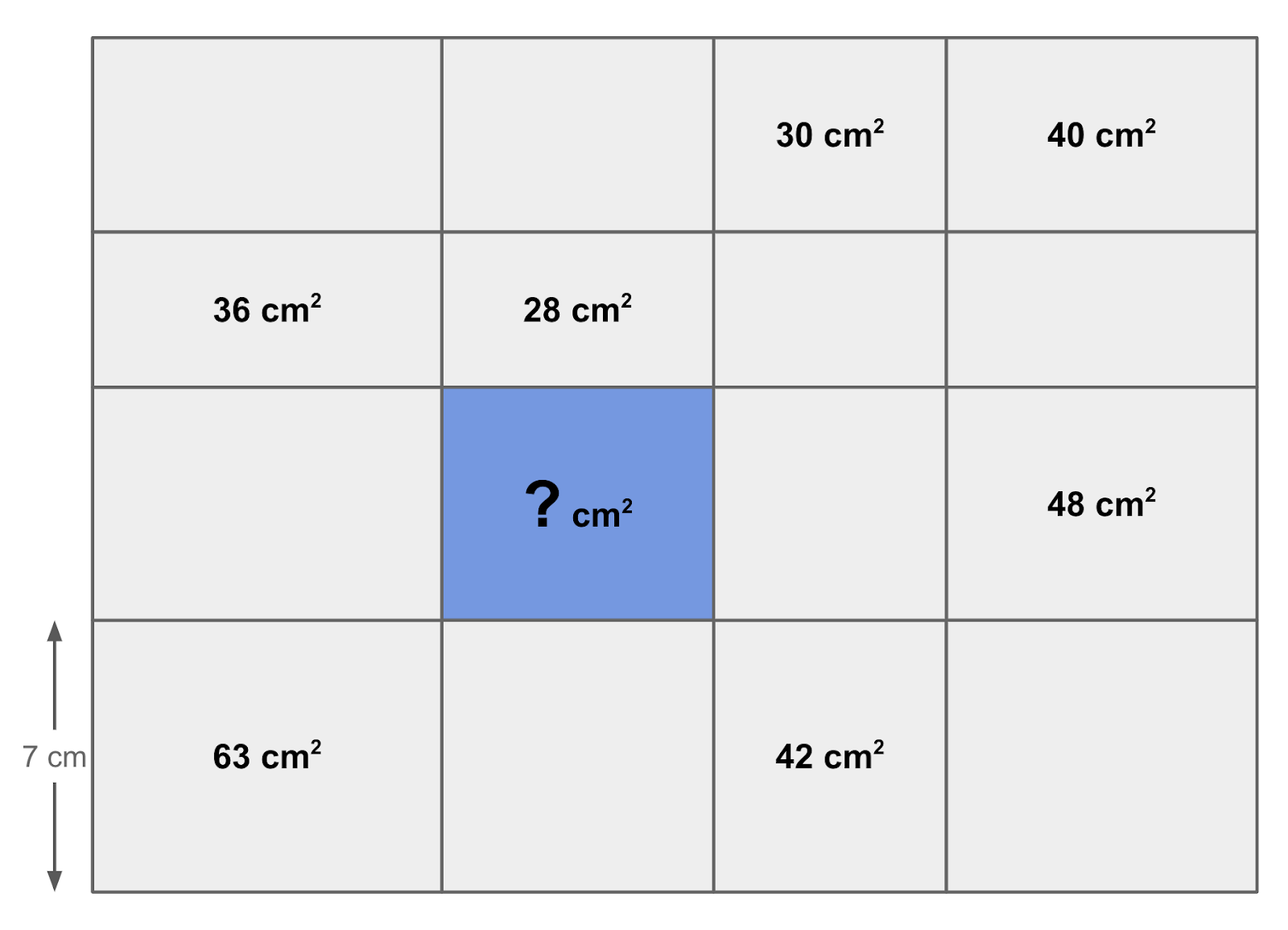Puzzles and Riddles
Learning Goals:
- Solve problems requiring the estimation and calculation of areas of rectangles
- Multiply and divide whole numbers using a variety of tools and strategies
- Determine the missing numbers in equations
The Challenge:
The goal of an area maze puzzle is to use what you know about the area of rectangles, multiplication, and division, to find unknown areas or dimensions (labelled with a question mark.) How could you use what you know in the puzzles below to find the mystery area of the blue rectangle OR the mystery length of the missing blue dimension?
Reminder:
The area of a rectangle can be found by multiplying the length x the width. These puzzles are not drawn to scale, so measuring side lengths with a ruler won’t help you solve them!



Questions and Prompts to Support your Child:
- What have you tried so far? What could we try together?
- What missing dimensions do we need to calculate the area of the blue rectangle? How can we use partial dimensions to help us progress? (hint: think addition/subtraction!)
- If you feel stuck, it might help to start by looking for known dimensions – if we know that this 30 cm2 rectangle has a width of 5 cm, what would the length need to be? How does this newfound dimension help us get closer to finding our mystery area?
Extensions & Adaptations:
- If calculations are feeling too tricky, grab a calculator!
- This might be our first time experiencing a known area as a means to figure out a missing dimension – remember that division is a way to “undo” multiplication!
- Try creating your own area puzzles by sketching some connected rectangles, labelling all of the lengths and widths, calculating the areas, then erasing all but a few so someone can solve it. How much information do you need to leave so it’s still possible to solve? How much information is too much and would make it too easy? Is there a way to include partial dimensions to increase the difficulty?
- Check out areamaze.com for many more puzzles – including some more challenging options!
Adapted from Areamaze.com & Puzzleoftheweek.com
Categories: Elementary

